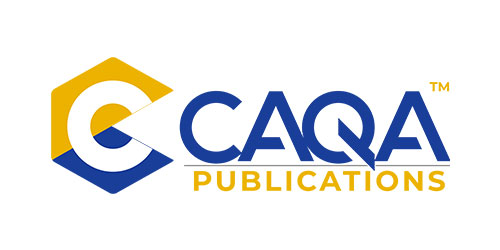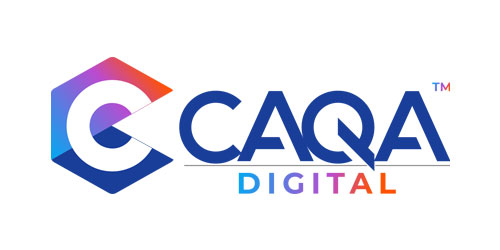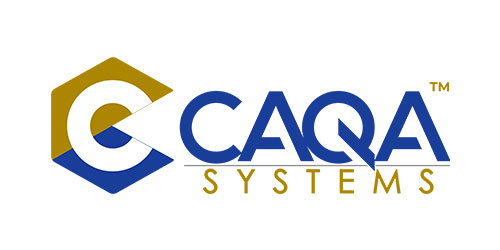-
Home
- |
- Blogs
- |
- Training and Assessment
- |
- Writing your Training and Assessment Strategy – Part 2 of Part 5
- Home
- |
- Blogs
- |
- Training and Assessment
- |
- Writing your Training and Assessment Strategy – Part 2 of Part 5

Writing your Training and Assessment Strategy – Part 2 of Part 5
To refresh yourself, please find Part 1 here
In our part 1, we had the opportunity to cover a number of topics relevant to writing a compliant and useful training and assessment strategy. Topics covered included:
- What is the definition of training and assessment strategy?
- Why is it known as a high-level view of a course/ training program or a “Helicopter—document”?
- What are the other terms we use for training and assessment strategies?
- What should we call our document according to regulatory requirements and guidelines?
- What information must be included in a training and assessment strategy?
- How a training and assessment strategy should be saved?
- How auditors use the training and assessment strategy?
- Why do we need a fit for purpose training assessment strategy?
- What a training organisation must consider when designing a training and assessment strategy?
In this part of the series, we will cover the following main points:
- Can a training and assessment strategy be used for different learner cohorts?
- What are the different learner cohorts?
Can a training and assessment strategy be used for different learner cohorts?
A simple answer to this question is “no”. The regulatory requirements require the training provider to ensure they have employed suitable and effective training and assessment practices after evaluating and assessing the needs of each of their learner. You can certainly categorise the learners, according to their preferences, needs and requirements into separate learner cohort but then you must design a learning and assessment strategy for each of your learner cohort.
You can offer learners a learning experience that is unique to the cohort they belong to by categorising them into smaller groups based on category they fall into. You can separate and organise discussion topics by cohorts so that participants only communicate with people from their own group. You can design course material in such a way that different cohorts of learners receive different assessments or training materials designed and prepared to meet their individual learning and training needs and requirements.
Regulatory guidelines related to this matter are:
Standards for RTOs 2015:
Clause 1.1
The RTO’s training and assessment strategies and practices, including the amount of training they provide, are consistent with the requirements of training packages and VET accredited courses and enable each learner to meet the requirements for each unit of competency or module in which they are enrolled.
Clause 1.2
For the purposes of clause 1.1, the RTO determines the amount of training they provide to each learner with regard to:
- the existing skills, knowledge and the experience of the learner
- the mode of delivery
- where a full qualification is not being delivered, the number of units and/or modules being delivered as a proportion of the full qualification.
Clause 1.3
The RTO has, for all of its scope of registration, and consistent with its training and assessment strategies, sufficient:
- trainers and assessors to deliver the training and assessment
- educational and support services to meet the needs of the learner cohort/s undertaking the training and assessment
- learning resources to enable learners to meet the requirements for each unit of competency, and which are accessible to the learner regardless of location or mode of delivery
- facilities, whether physical or virtual, and equipment to accommodate and support the number of learners undertaking the training and assessment.
Clause 1.4
The RTO meets all requirements specified in the relevant training package or VET accredited course.
Clause 2.2
The RTO:
- systematically monitors the RTO’s training and assessment strategies and practices to ensure ongoing compliance with Standard 1
- systematically evaluates and uses the outcomes of the evaluations to continually improve the RTO’s training and assessment strategies and practices. Evaluation information includes but is not limited to quality/performance indicator data collected under clause 7.5, validation outcomes, client trainer and assessor feedback and complaints and appeals.
Let us understand this concept using some practical real-life examples.
Example 1:
The training organisation has the opportunity to offer training through different training delivery modes such as online, workplace, distance, classroom or blended (combination of two or more delivery modes). However, as the training organisation will not be able to use the same strategies, resources, equipment, and materials for all the different delivery modes. The same condition applies to the training and assessment strategies as well. Online learners might need access to learning management system, discussion forums, interactive training sessions, online meetings and so on when traditional classroom learners may need face to face, live interactions with trainers and assessors, set time and set location for training and learning activities, physical distancing, different set of equipment and training materials. Therefore, you will not be able to design a single strategy that can meet the requirements of these completely different kinds of learner cohorts.
Example 2:
Another example is for learners who may or may not require prerequisite learning and assessment criteria before enrolling into a course. There are several courses where students are required to have adequate and sufficient knowledge, skills and understanding to enrol into the course. Without meeting these fundamental enrolment and admission requirements, that can be set by the training product, a regulatory body, at state or federal level or by the training organisation, the learners should not be able to enrol, study and complete a course. You will therefore require two separate set of training programs, one for learner cohort who can commence training after demonstrating they meet the admission and enrolment criteria and another one for learners who must complete the prerequisites before enrolling into a course. This example also includes learners who need to improve their English proficiency skills before they can enrol to complete a training program, completing a training course before enrolling into a pathway program, completing a hand—on employment training program or work—experience for a certain time period and so on.
Note: Some of these requirements can be co-requisite (must be studied at the same time of completing other components of the training and assessment) and others are pre—requisite (must be successfully completed before enrolling into the training program).
Example 3:
We discussed this example in part 1 as well but thought to include again to ensure the readers understand why we need to develop separate training and assessment strategies to meet the needs of the different learner cohorts.
For example, a TAS initially developed to deliver training to mature students with substantial industry experience with a shorter delivery time frame and assessment methods which utilise the candidates prior experience- or application to the workplace. If the RTO’s new learner cohort has little to no experience, the TAS will not be fit for purpose.
There is also no “single size” template for a TAS. All variations must be correctly recorded through a customised or new training and assessment strategy.
What are the different learner cohorts?
The learner cohorts can also be based on a number of other factors such as:
- Location where training and assessment will be delivered, is it online, classroom, workplace, blended etc.
- The facilities, equipment, materials, support services and resources required to deliver the training.
- Skill gaps identified in the learner cohorts or expected pre-requisite knowledge, skills and work experience required to enrol and complete the course
- The course duration and timings and arrangements to cater these needs.
- Course entry and exit requirements
- English language proficiency requirements
- Support needs and requirements of each learner
- Disability, demographics, degree, dialect, difference
- Aboriginal or Torres Strait Islander, first in family to attend university, non-English speaking background.
- Multicultural, mind-set, motivation, morals
- Employment status of the learners
- Reason for enrolling into the course
- Relevant industry and work experience in the specific stream
- Course delivery structure and sequence
- Recognition of prior learning and recognition of current competencies
- Duration of the training course
- Other possible variations for learners with different learning and assessment needs and requirements
Note: This is not an exhaustive list and written for reference purposes only.
In our next editions, we will discuss:
- What should be included in a training and assessment strategy (TAS) template
- How to complete a training and assessment strategy (TAS) template
- Review and manage training and assessment strategy (TAS) tool
References:
https://www.asqa.gov.au/standards/training-assessment/clauses-1.1-to-1.4-2.2
3 years ago
Related News

29 April, 2021
Writing your Training and Assessment Strategy – Part 2 of Part 5
To refresh yourself, please find Part 1 here In our part 1, we had the opportunity to cover a number of topics relevant to writing a compliant and useful training and assessment strategy. Topics covered included: What is the definition of training and assessment strategy? Why is it known as a high-level view of a […]
3 years ago

22 August, 2021
According to a new report, businesses are increasing their investments in cybersecurity skills
According to new research from cybersecurity firm Sophos, internal IT departments and businesses are making investments in their staff’ cybersecurity skills and knowledge. According to a new analysis from Sophos, IT teams around the world faced unprecedented challenges in 2020 and 2021, with cybersecurity issues ranking at the top of the list – if not […]
3 years ago

3 September, 2021
How to transition from classroom to online or distance training and assessment
Moving from face-to-face training and assessment to online or distance learning and assessment can be difficult, especially when you have already invested in facilities, equipment, and resources for face-to-face training and assessment. However, in order to survive and also to embrace new technologies, many training organisations have decided to move to an online or distance […]
3 years ago

19 September, 2021
Quality training and assessment resources from CAQA Resources
While operating as a registered training organisation, you will be required to make a range of decisions, with obtaining high-quality training and assessment resources being among the most significant. To ensure that your students receive the learning experience necessary to function competently in their chosen vocation, you need to invest in quality assessment and learner […]
3 years ago

4 October, 2021
The strategies for achieving personal and professional success.
There are many strategies to success you can use in your life. Some people are successful because they work hard. Other people are successful because they have a great opportunity that came their way. Some people are successful because they have the right connections, but most people are successful because they have good timing. These […]
3 years ago

4 October, 2021
Contextualisation – Why you must contextualise the training and assessment resources.
Understanding contextualisation Contextualising assessments and learner materials is one of the most thought-provoking tasks that RTOs face. Many RTOs are deemed non-compliant due to their contextualisation ‘methods’. What is contextualisation, what is the right way to do it, how is it done, why do RTOs conduct it incorrectly? Before explaining what is contextualisation, let’s first […]
3 years ago

14 October, 2021
Risk assessment and risk management at your organisation
Risk assessment and risk management at your organisation should be a continuous process. It involves best practices like identifying, assessing and mitigating risks. Risk assessment is the process of identifying and analysing the hazards, risks, and threats to an organisation. A risk assessment is a process to identify and evaluate the potential risks and threats […]
3 years ago

14 October, 2021
Training and assessment strategies – why you should have a clear roadmap!
When it comes to training, there are many factors that contribute to the effectiveness of the training. However, one of the most important factors is how effective and efficient your training and assessment strategy is. There are a number of key considerations in training and assessment strategies including but not limited to: – Learner experience […]
3 years ago

17 October, 2021
How to protect the copyright of your training and assessment materials Margaret Ryan (lawyer and trade marks attorney)
Training and assessment materials are normally protected by copyright in Australia. They are a valuable resource and should be protected from unauthorised copying, which may reduce their value and the value of the business which supplies these resources. Copyright is automatic In Australia copyright protection is automatic. As soon is an author records their thoughts […]
3 years ago

1 November, 2021
How to check the quality of assessment resources
Critical skills for checking the quality of your assessment resources. The purpose of the assessment tool The main purpose of an assessment tool, student assessment, or assessment pack is to ensure that trainers and assessors can effectively establish whether a learner is competent or not yet competent in a training product. There are three ways […]
2 years ago
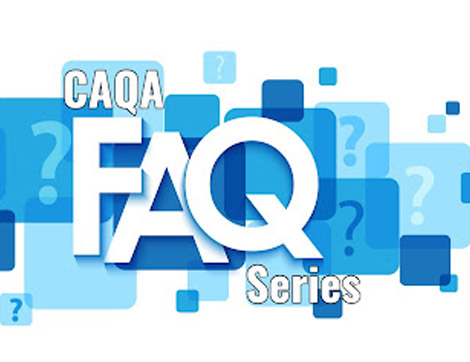
1 November, 2021
CAQA FAQ Series – Industry consultation
What is industry consultation in the RTO context? It is a process in which the training representatives of a training organisation consult with representatives from the industry to determine whether they are using the most appropriate facilities, equipment, and resources for delivering the training, whether their trainers and assessors have the most up to date […]
2 years ago
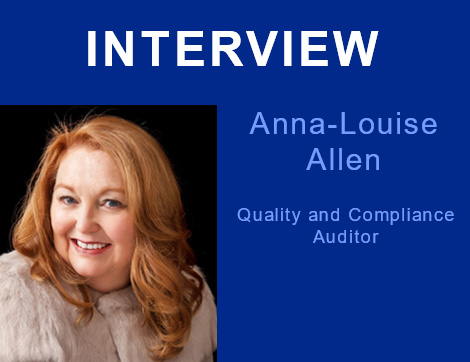
14 December, 2021
Interview with Anna-Louise Allen, Quality and Compliance Auditor
Anna-Louise Allen has been a leader in education and a catalyst for change and innovation in teaching and learning throughout her career. Anna-Louise commenced as a technical school teacher in the western suburbs teaching Geography. She had held leadership positions in schools, run the Geography Teachers Association of Victoria and worked in a variety of […]
2 years ago

31 January, 2022
Formative vs Summative Assessment: A Comparison
Formative and summative assessment, the two main types of assessing knowledge and skills, are often confused with one another. Both types of assessment have a place in the teaching and learning process, but it can be difficult to distinguish between formative and summative assessment. Both formative and summative assessments are used to assess learning, provide […]
2 years ago

20 February, 2022
NCVER Report – Upskilling and reskilling: the impact of the COVID-19 pandemic on employers and their training choices
Photo source: NCVER NCVER’s latest research examines how Australian employers have been affected by the COVID-19 pandemic and their future workforce training plans. To survive financially during the pandemic, many businesses had to adjust and digitise their operations, as well as shift quickly to remote working arrangements. As restrictions started easing in 2020, businesses were […]
2 years ago

20 February, 2022
RTO compliance guide to buy compliant assessment resources
According to almost all ASQA reports, getting an assessment right is one of an RTO’s most difficult compliance issues, with a substantial number of RTOs, audited being found to be non-compliant with clause 1.8 (ASQA’s 2017 report showed around 72{811251a11785699196b1edfb998e8df43131d83f2e2fc9971f96b5821112af2c} RTOs failed audit on assessment resources). This is what we notice as well whenever we […]
2 years ago

25 April, 2022
Issuing qualifications to your own trainers, assessors and staff members
Qualifications are important. They ensure that trainers and assessors are current and competent in their fields. They also help to put a check on the quality of training provided by trainers and assessors. You may be tempted to issue qualifications to your own trainers, assessors and staff members for a number of reasons such as […]
2 years ago
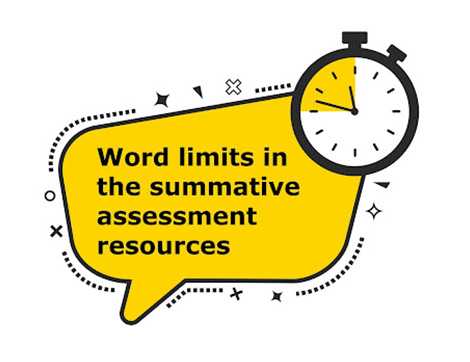
22 May, 2022
The importance of having word limits in the summative assessment resources
One of the most important aspects of VET is summative assessment. Summative assessment resources play a vital role in ensuring that students are able to demonstrate their learning and progress. However, summative assessment resources can also be a source of frustration for both students and educators if they are not well managed and written. It […]
2 years ago
Archives
- July 2022
- June 2022
- May 2022
- April 2022
- March 2022
- February 2022
- January 2022
- December 2021
- November 2021
- October 2021
- September 2021
- August 2021
- July 2021
- June 2021
- May 2021
- April 2021
- March 2021
- December 2020
- November 2020
- May 2020
- February 2020
- December 2019
- November 2019
- October 2019
- September 2019
- August 2019
- July 2019
- May 2019
- April 2019
- March 2019
- December 2018
- November 2018
- October 2018
- September 2018
- August 2018
- July 2018
- June 2018
- May 2018
- November 2016
- October 2016

Sukh Sandhu
Chief Executive Officer
Sukh has been working in the VET and Higher Education Industry for over 20 years. In this time, he has held several roles with RTO’s including CEO roles for International Colleges and National Compliance and Quality Assurance Manager roles for several RTO’s, TAFE’s and Universities. Sukh has also worked for ASQA as a Business Systems Project Official.
Sukh has had extensive project management experience in risk management, compliance, administration and as a training consultant. He has extensive knowledge in government compliance standards and has participated in nearly one hundred audits across Australia and provided consultancy advice regarding ASQA/VRQA, TEQSA, ACPET, DET-HESG, VQF/Higher Education, ELICOS, NEAS, ANMAC, AHPRA, CRICOS, ESOS and ISO.
Sukh is a member of several independent professional organisations and government bodies including, ACPET, VELG, ACS, AITD, MARA, MIA, ISANA, APEX, IEEE, The Internet Society (Global Member), AISIP, IAMOT, ACM, OISV, APACALL, IWA, Eta Kappa Nu, EDSIG and several others.

 Enroll Now
Enroll Now Info Pack
Info Pack




